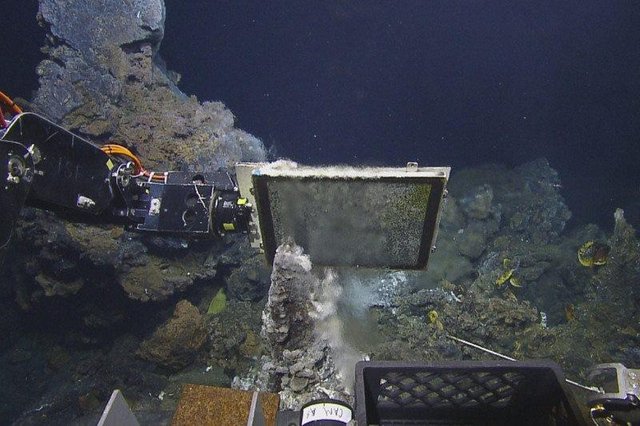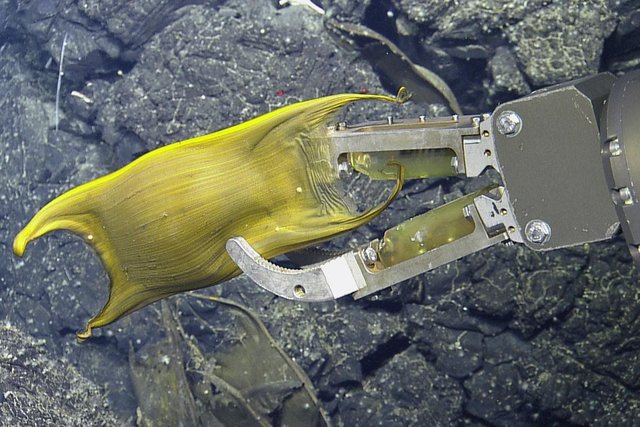Deep-sea fish lay eggs near hydrothermal vents to keep them warm

One types of remote ocean angle has hatched its eggs in an apparently inconceivable place: the heating hot rocks of aqueous vents. Such vents are openings in the seabed that heave sulfurous gases and liquids from the guts of the Earth out into the sea.
"This is the first run through this egg-hatching conduct, utilizing heat from dynamic aqueous vents, has been recorded in the marine condition," says think about pioneer Pelayo Salinas de León of the Charles Darwin Foundation on Santa Cruz Island in the Galápagos. He speculates the fish do it "to accelerate egg hatching time".Salinas and his associates were investigating the Iguanas-Pinguinos aqueous vents, 45 kilometers north of Darwin Island and three kilometers under the ocean. They were utilizing a remotely worked vehicle called Hercules.
A couple of meters from a "dark smoker" vent, the group spotted 157 eggs. Every wa about the measure of a cell phone and resembled a high temp water bottle with fingers at each corner.

They utilized one of Hercules' arms to gather a modest bunch of egg cases. "We discovered they were at an early formative stage," says Salinas.
Nearer examination uncovered that the eggs had a place with a remote ocean angle called the Pacific white skate (Bathyraja spinosissima).
Hercules couldn't take the temperature of the stones on which the eggs were kept. In any case, the water 3.5 meters over the surface arrived at the midpoint of 2.7°C, a degree or so hotter than water far from the vents. This recommends the vents give a warm shelter to marine life, as "temperatures on the [vent surface] are probably going to be impressively higher," says Salinas.
"This is the first run through beam eggs have been reported from a vent site," says Alex Rogers of the University of Oxford. "For the most part, these destinations are seen as being excessively poisonous for youthful life phases of creatures to endure, yet the extreme instances of the eggs may offer some assurance, and plainly the hotter temperatures will permit more fast improvement contrasted with colder temperatures of the encompassing ocean."
Little is thought about the ways of life of Pacific white skates. "We have no data about what babies do when they bring forth, where they spend their initial days, [or] to what extent before they leave the site," says Salinas.
In any case, better-contemplated relatives like the Alaska skate (B. parmifera) brood their eggs for three-and-a-half years at temperatures of 4.4°C. In view of that, Salinas assesses that, at 2.7°C, Pacific white skate eggs would take four years to bring forth.
Numerous different animals live on aqueous vents, for example, goliath tubeworms and sasquatch crabs. The skates invest a large portion of their energy somewhere else, yet the vents might be a vital site for them by and by. "Maybe this offers a window on how some vent-endemic taxa started their advancement towards life around these antagonistic conditions," says Rogers.
Share your opinion!!
Upvote@ajokebunmi